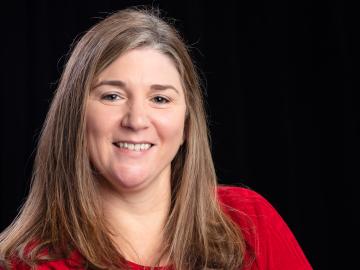
Filter News
Area of Research
- (-) Biology and Environment (177)
- (-) Isotopes (35)
- (-) National Security (79)
- (-) Supercomputing (311)
- Advanced Manufacturing (34)
- Biological Systems (18)
- Biology and Soft Matter (5)
- Building Technologies (12)
- Chemical and Engineering Materials (4)
- Chemistry and Physics at Interfaces (11)
- Clean Energy (522)
- Climate and Environmental Systems (14)
- Computational Biology (6)
- Computational Chemistry (5)
- Computational Engineering (5)
- Computer Science (19)
- Data (1)
- Earth Sciences (1)
- Electricity and Smart Grid (3)
- Energy Frontier Research Centers (14)
- Energy Sciences (5)
- Fossil Energy (3)
- Fuel Cycle Science and Technology (3)
- Functional Materials for Energy (16)
- Fusion and Fission (54)
- Fusion Energy (17)
- Geographic Information Science and Technology (3)
- Isotope Development and Production (3)
- Materials (433)
- Materials Characterization (2)
- Materials for Computing (36)
- Materials Synthesis from Atoms to Systems (13)
- Materials Under Extremes (12)
- Mathematics (1)
- Neutron Data Analysis and Visualization (4)
- Neutron Science (190)
- Nuclear Science and Technology (74)
- Nuclear Systems Modeling, Simulation and Validation (3)
- Nuclear Systems Technology (1)
- Quantum Condensed Matter (4)
- Quantum information Science (9)
- Reactor Technology (1)
- Renewable Energy (4)
- Sensors and Controls (5)
- Transportation Systems (11)
News Type
News Topics
- 3-D Printing/Advanced Manufacturing (15)
- Advanced Reactors (3)
- Artificial Intelligence (49)
- Big Data (28)
- Bioenergy (50)
- Biology (76)
- Biomedical (33)
- Biotechnology (14)
- Buildings (6)
- Chemical Sciences (14)
- Clean Water (11)
- Climate Change (53)
- Composites (5)
- Computer Science (112)
- Coronavirus (24)
- Critical Materials (4)
- Cybersecurity (23)
- Decarbonization (23)
- Energy Storage (13)
- Environment (103)
- Exascale Computing (24)
- Frontier (28)
- Fusion (3)
- Grid (13)
- High-Performance Computing (53)
- Hydropower (8)
- Irradiation (1)
- Isotopes (25)
- Machine Learning (26)
- Materials (28)
- Materials Science (24)
- Mathematics (3)
- Mercury (7)
- Microscopy (16)
- Molten Salt (1)
- Nanotechnology (16)
- National Security (36)
- Net Zero (3)
- Neutron Science (17)
- Nuclear Energy (12)
- Partnerships (8)
- Physics (9)
- Polymers (4)
- Quantum Computing (19)
- Quantum Science (25)
- Renewable Energy (1)
- Security (14)
- Simulation (23)
- Software (1)
- Space Exploration (6)
- Summit (46)
- Sustainable Energy (37)
- Transformational Challenge Reactor (1)
- Transportation (10)
Media Contacts

Mike Benson has spent the last 10 years using magnetic resonance imaging systems — much as you find in a hospital — to understand the fluid dynamics of flows around objects and even scaled replicas of cities. He aims to apply MRI scanning to

Safety, Engineering and Support Section Head Michele Baker brings strategic planning and emergency management skills to the role.
To better understand important dynamics at play in flood-prone coastal areas, Oak Ridge National Laboratory scientists working on simulations of Earth’s carbon and nutrient cycles paid a visit to experimentalists gathering data in a Texas wetland.

As current courses through a battery, its materials erode over time. Mechanical influences such as stress and strain affect this trajectory, although their impacts on battery efficacy and longevity are not fully understood.

In 1993 as data managers at ORNL began compiling observations from field experiments for the National Aeronautics and Space Administration, the information fit on compact discs and was mailed to users along with printed manuals.

The Department of Energy’s Oak Ridge National Laboratory announced the establishment of the Center for AI Security Research, or CAISER, to address threats already present as governments and industries around the world adopt artificial intelligence and take advantage of the benefits it promises in data processing, operational efficiencies and decision-making.

For 25 years, scientists at Oak Ridge National Laboratory have used their broad expertise in human health risk assessment, ecology, radiation protection, toxicology and information management to develop widely used tools and data for the U.S. Environmental Protection Agency as part of the agency’s Superfund program.

Scientist Xiaohan Yang’s research at the Department of Energy’s Oak Ridge National Laboratory focuses on transforming plants to make them better sources of renewable energy and carbon storage.

ORNL hosted its annual Smoky Mountains Computational Sciences and Engineering Conference in person for the first time since the COVID-19 pandemic.

As Frontier, the world’s first exascale supercomputer, was being assembled at the Oak Ridge Leadership Computing Facility in 2021, understanding its performance on mixed-precision calculations remained a difficult prospect.


